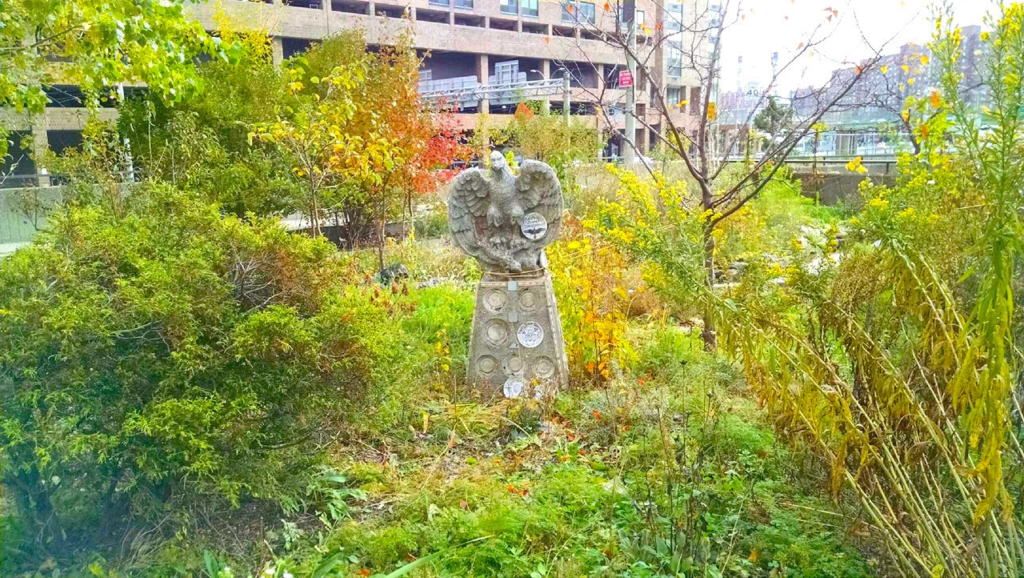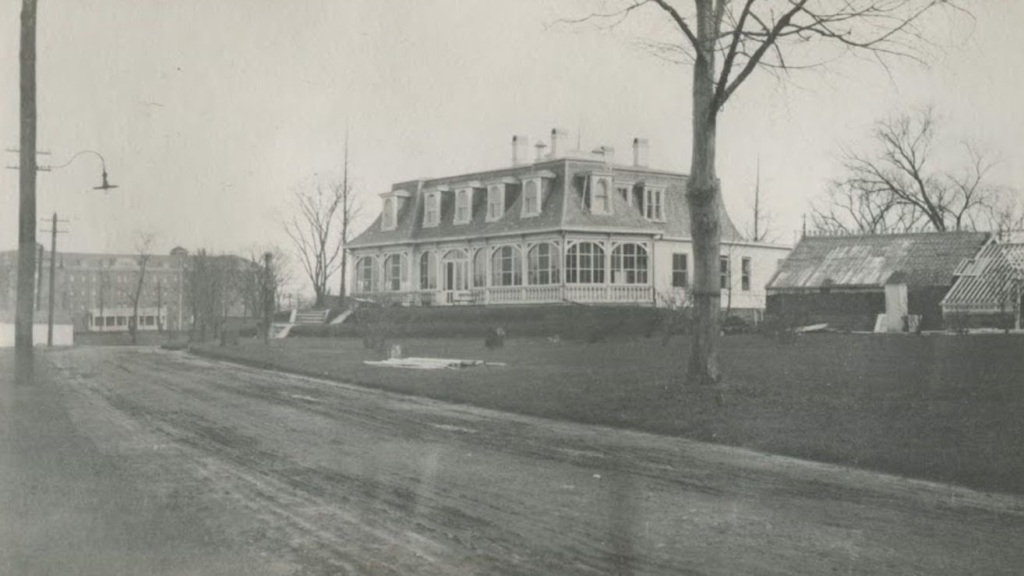Friday, May 12, 2023 – THE HOSPITAL THAT CONTINUES TO TREAT ALL THAT ENTER


THE PERFECT MOTHER’S DAY GIFT
GIVE MOM A 14″ TRAM PILLOW!
SOFT AND COMFY WAY TO ENJOY OUR ISLAND TRAM
LIMITED QUANTITIES AVAILABLE AT
RIHS VISITOR CENTER KIOSK
$48-
GREAT GIFT FOR DAD, NEXT MONTH FOR FATHER’S DAY!

FROM THE ARCHIVES
FRIDAY, MAY 12, 2023
ISSUE 988
TOP 10 SECRETS
OF
BELLEVUE HOSPITAL
PART 2
UNTAPPED NEW YORK
BELLEVUE IS THE MAIN PUBLIC HOSPITAL OF NYC HEALTH+HOSPITALS. THIS ALONG WITH ALL THE 11 PUBLIC HOSPITALS TREAT ALL THE NEED CARE WITHOUT REGARD FOR INSURANCE, ORIGINS, AND STATUS.

Bellevue Hospital in Kips Bay, officially NYC Health + Hospitals/Bellevue, is one of the largest hospitals in the United States. The hospital has achieved many breakthroughs throughout its history, from being one of the first to employ ambulance services to having the earliest maternity ward. Bellevue Hospital has contributed massively to the development of modern medicine but also has a dark history. At one point, the name “Bellevue” was often used to refer to psychiatric hospitals in the 1800s. The hospital made important developments in treating epidemics, from yellow fever to AIDS, and saved the lives of people from all walks of life, from the general public to presidents and celebrities. Here, we take a look back at the hospital’s long history and pull out the top 10 secrets of Bellevue Hospital!
6. A German spy feigned paralysis at the hospital for two years

Image via Library of Congress
Perhaps one of the hospital’s strangest encounters with a patient was with Fritz Joubert Duquesne. He was a German and South African Boer soldier and journalist, though he was perhaps best known for being a spy. Duquesne would frequently lie about his identity, reinventing his past and asserting he was related to royalty to get into (and out of) high-stakes situations. He gathered human intelligence for the Boers during the Second Boer War and led spy rings in Great Britain, Latin America, and the United States. He was captured by multiple governments. In 1917, federal agents in New York charged him with insurance fraud for insurance claims, after which the agents discovered evidence that he was involved with multiple ship bombings.
Knowing he would potentially be extradited to the U.K. on murder charges, Duquesne pretended to be paralyzed and was subsequently sent to Bellevue Hospital’s prison ward. Until May 1919, Duquesne faked paralysis in his right leg, carrying a cane to play the part. Just days before his extradition, Duquesne disguised himself as a woman, cut the bars of his cell, and climbed over the ward’s walls to escape. He successfully fled to Mexico and then Europe, and it wasn’t until 1926 that he was documented again, this time under yet another identity.
7. The hospital played a major role in combating the AIDS Crisis

Bellevue Hospital was one of the key players in the fight against the AIDS Crisis in the 1980s. In 1981, Bellevue reported one of the first three cases of HIV/AIDS, which at the time was an unexplained immunodeficiency. Over the next few years, the hospital worked to identify the disease and pioneer treatments. In 1985, Bellevue opened the country’s first hospital-based HIV nutrition program. That year, Coler Memorial Hospital led the country in allocating long-term care beds to people with AIDS, while Jacobi opened Kroc Day Care Center for Children with HIV.
The following year, HHC hospitals including Bellevue opened clinics for AZT, the first antiretroviral drug. By 1990, throughout HHC’s 11 hospitals, 1,100 new AIDS patients were admitted daily. In 1997, after years of treating HIV/AIDS patients, Bellevue participated in an NIH clinical trial examining the use of antiretroviral drugs in children and infants with HIV. The hospital further participated in trials for Nevirapine, given to HIV-positive pregnant women, and for combination drug therapies. Bellevue played a key role in developing HAART, or the “Triple Drug Cocktail,” to treat the disease.
8. Mark David Chapman, Norman Mailer, Grover Cleveland, and James Garfield were treated at Bellevue

Bellevue Hospital has treated thousands upon thousands of New Yorkers, from celebrities to those who could barely afford treatment. Among these have been some famous and unfortunate cases involving major historical figures. One of the most famous literary references to Bellevue was in Allen Ginsberg‘s poem “Howl,” inspired by his time at the hospital. One of the most notable patients was Mark David Chapman, who received treatment after murdering John Lennon. Chapman had medical appointments at Bellevue in between his stays on Rikers Island. Another violent patient was Norman Mailer, the American novelist behind The Naked and the Dead who was treated at Bellevue after stabbing his wife. Mailer was convicted of assault for nearly fatally stabbing Adele Morales with a penknife, for which he received three years probation.
On the flip side, however, the hospital treated James Garfield after he was hit by two bullets in 1881. Garfield was shot at the Baltimore and Potomac Railroad Station by Charles Guiteau, who erroneously believed he should have been rewarded with a consulship for helping Garfield win the election. Bellevue’s Frank Hamilton and his team came down to Washington to treat Garfield’s wounds, though he would die two months later from infection. Garfield was not the only president Bellevue treated; Grover Cleveland came to Bellevue after discovering a cancerous mass in his mouth amid the Panic of 1893. To avoid suspicion, Cleveland was treated on a yacht in the East River by numerous Bellevue medical faculty, which was ultimately successful after nearly two hours.
9. Bellevue treated New York’s first Ebola patient

Bellevue made national headlines in 2014 when it treated the city’s first Ebola patient, which put the city on edge for a few months. The hospital treated Craig Spencer, who treated Ebola patients in Guinea through Doctors Without Borders and contracted the virus himself before heading back to the U.S. He was placed into isolation at Bellevue as investigators tried to piece together everyone he had contact with in the days prior; he had taken the A and L trains the day before, as well as took a taxi. The virus could not be spread until symptoms began to show, though, and it couldn’t be spread through the air, though the bowling alley he had frequented the night prior remained shut for a day.
In 2019, the hospital conducted an emergency exercise to transport a simulated Ebola patient from Robert Wood Johnson University Hospital in New Jersey to Bellevue’s Regional Ebola and Other Special Pathogen Treatment Center. The experiment was performed in the wake of an Ebola outbreak in the Democratic Republic of the Congo, resulting in 1,100 cases and 700 deaths. The experiment, whose results could be shared with African nations, tested the feasibility of safe patient transport, including the use of biocontainment devices and personal protective equipment, as well as appropriate decontamination procedures.
10. The hospital houses its own sculpture garden which was vandalized in 2014

Amid the sound of ambulances is a surprisingly peaceful sculpture garden near the water called the Bellevue Sobriety Garden. The quarter-acre park between First Avenue and the FDR Drive includes sculptures, mosaics, plants, and other artistic features. The Sobriety Garden, as its name suggests, was begun by Bellevue psychiatrist Dr. Annatina Miescher in 1989 who got recovering addicts from its Chemical Recovery Program to help tend the plants. The park was almost destroyed in 2006 after proposals were put forward for additional parking, though patients and staff objected.
The fairly secret garden includes all sorts of sculptures of human figures and animals, though in 2014, dozens of animal sculptures were vandalized. According to a 2014 New York Times article, “The faces of rams were cracked and crumbling. The neck and beak of a bird sculpture were broken and hanging to the side.” The cement, sand, and chicken wire sculptures, many of which were created by patients, were left scattered across the garden. Since then, Miescher and other staff and patients have worked to restore the garden, which is now in full bloom.
THURSDAY PHOTO OF THE DAY
CITY HALL WITH WORLD BUILDING DOME
HARA REISER AND ANDY SPARBERG GOT IT RIGHT


FRIDAY PHOTO
SEND YOUR SUBMISSION TO:
ROOSEVELTISLANDHISTORY@GMAIL.COM


Text by Judith Berdy
Thanks to Bobbie Slonevsky for her dedication to Blackwell’s Almanac and the RIHS
Thanks to Deborah Dorff for maintaining our website
Edited by Melanie Colter and Deborah Dorff
All image are copyrighted (c) Roosevelt Island Historical Society unless otherwise indicated
NEW YORK CITY MUNICIPAL ARCHIVES
UNTAPPED NEW YORK
THIS PUBLICATION FUNDED BY DISCRETIONARY FUNDS FROM CITY COUNCIL MEMBER JULIE MENIN & ROOSEVELT ISLAND OPERATING CORPORATION PUBLIC PURPOSE FUNDS.


Copyright © 2022 Roosevelt Island Historical Society, All rights reserved.Our mailing address is:
rooseveltislandhistory@gmail.com

Leave a comment